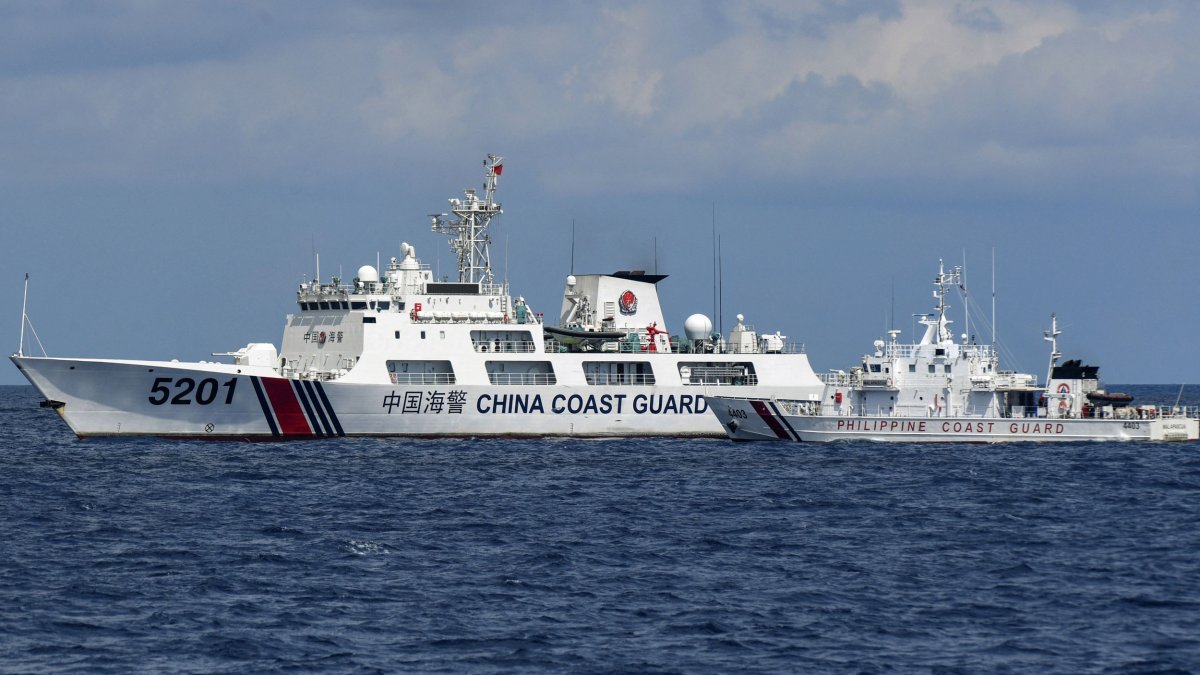China Reinstates South China Sea claims Citing historical treaties amid rising tensions
China has confirmed its territorial claims to a large part of the South China Sea. It asserts that they are based on a set of international agreements dating from the late nineteenth century. It comes as tensions are rising with neighbouring countries, especially the Philippines. Also, the U.S. presence in the South China Sea is being scrutinized more.
**The Core of the Dispute:** The South China Sea remains a contentious zone, with China laying claim to a majority of its waters. The claims of China and other countries in the area overlap, especially the Philippines. This is a close ally to the United States, bound by an agreement on mutual defense. Concerns about possible escalated conflict have been raised by recent incidents between Chinese and Philippine forces.
Beijing defends itself by asserting that China is the only country to have discovered the South China Sea, and as such has the right to “historic rights” in relation to the disputed water within the unilaterally-declared “nine dash line.” This assertion, however, was refuted by an international court in 2016, which found that there is no basis for the “nine dash line” under international law.

**China’s Legal Justification:** According to Senior Colonel Zhang Xiaogang, a spokesperson for the Chinese Defense Ministry, the Nansha Qundao (Spratly Islands) and Huangyan Dao (Scarborough Shoal) are located “outside” the Philippine territory as defined by international treaties. The 1898 Treaty of Peace, between the U.S.A. and Spain; the 1900 Treaty of Cession of Outlying Islands of the Philippines by the U.S.A. with Spain and the 1930 Convention of the United Kingdom and the U.S.A. regarding the border between North Borneo, Philippines and the Philippines are all international treaties.
Following the Spanish-American War, the 1898 Treaty of Paris was the first time that Spain ceded sovereignty to the United States over the colony of the Philippines. In 1946, the United States granted independence to the Philippines. The two countries then signed a Mutual Defense Treaty that solidified their relationship in 1951.
China claims that the activities of its police force in Spratly Islands, Scarborough Shoal and other areas are “reasonable and lawful.” China maintains that its law enforcement activities within the Spratly Islands are “reasonable, legal and beyond reproach.”
**Typhon Missile System Deployment:** These statements from the Chinese military follow demands from Philippine President Ferdinand Marcos Jr. that China cease its aggressive actions in the South China Sea, potentially in exchange for the removal of the U.S. military’s Typhon missile system currently stationed in the Philippines. The Typhon system is also known as Mid-Range Capability System (MRC). China has strongly condemned the deployment of the Typhon system as it views it as a threat.
China’s strong opposition against the Typhon deployment is based on its ability to hit targets from up to 1000 miles away. This capability has been cited as being destabilizing. Zhang stated that “the Typhon missile is both a strategic and offensive weapon.” United States officials have clarified that this weapon does not possess nuclear capabilities.
**Differing Perspectives:**
**Senior Colonel Zhang Xiaogang (Chinese Defense Ministry):** In a press briefing, Zhang stated, “By using the deployment of Typhon as a bargaining chip on the South China Sea issue, the Philippine side is selling out its own national security, putting the well-being of its people and regional peace and stability at grave risk. It is a dangerous, ridiculous behavior.
**Philippine President Ferdinand Marcos Jr.:** Marcos Jr. has downplayed the significance of the Typhon system, stating, “I don’t understand the [Chinese] Typhon missiles: comments No comments are made on the missiles of other countries. Their missile systems are 1,000 times stronger than those we possess.”
**Collin Koh (Institute of Defense and Strategic Studies, Singapore):** Koh highlighted the nuances of territorial claims, writing, “First, features sitting in [the Philippine exclusive economic zone] not ‘territory,’ though their legal statuses (island or rock) constitute another matter altogether. If you look at some old Chinese maps, they don’t include any of the continents. [South China Sea] Clusters of characteristics “Maybe we should also begin to examine those inconsistent features?”
**Future Trajectory:** China is expected to maintain its pressure on the Philippines regarding the South China Sea disputes and the U.S. missile deployment. U.S. officials including Antony Blinken have reiterated Washington’s commitment towards its mutual defense agreement with Manila. These tensions highlight the complexity of maritime disputes, and the strategic significance of the Indo-Pacific. In the current geopolitical climate, the conflicting claims over the Spratly Islands (also known as the Scarborough Shoal) and the Spratly Islands remain a flashpoint.


